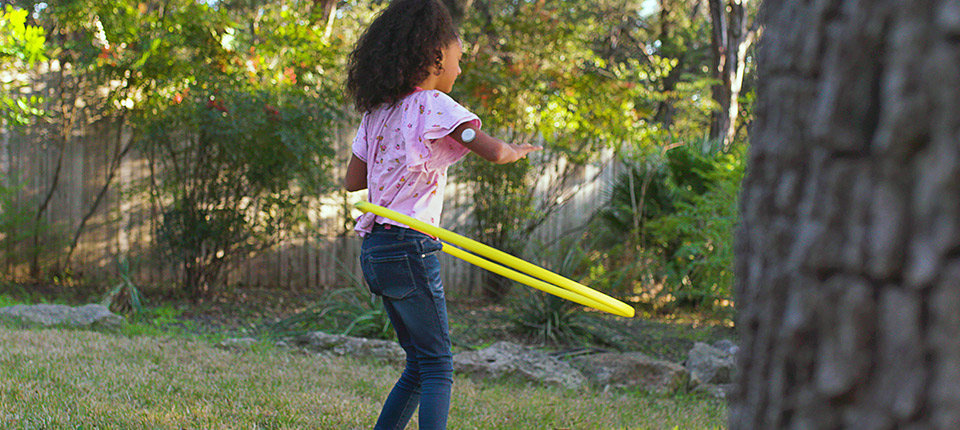A child with Band-Aids on each of their little fingers is a common occurrence when a young person is first diagnosed with diabetes.
Thankfully, parents can save those bandages for skinned knees and elbows that come with being a kid now that Abbott's revolutionary FreeStyle Libre 2 system has been cleared for adults and children 4 and up with diabetes.
With unsurpassed 14-day accuracy1 and the ability to measure glucose every minute, the FreeStyle Libre 2 system stands apart from other iCGMs on the market. But there's more to the story.
Get the details from Marc Taub, divisional vice president of technical operations for Abbott's Diabetes Care business, and Dr. Larry Kurt Midyett, a pediatric endocrinologist in Kansas.
What makes the FreeStyle Libre 2 system stand out from other iCGM systems on the market?
Taub: The FreeStyle Libre 2 system is the only iCGM [integrated continuous glucose monitoring] system that measures glucose every minute — five times more readings than our competitors2,3 — with 14 days of unsurpassed accuracy1 and the longest lasting self-applied sensor.
The FreeStyle Libre 2 system also features optional real-time alarms4 and has one third fewer false alarms for children compared to other iCGMs on the market.5,6 It's designed to digitally connect and communicate with other devices like insulin pens and pumps for self-dosing decisions.
How will the FreeStyle Libre 2 system impact children with diabetes?
Dr. Midyett: This is a very powerful opportunity for children, their families and caregivers. Not only can children monitor their glucose levels without painful fingersticks, but parents can quickly scan the sensor on the back of their child's arm and see the glucose levels in real-time, whether it's at a sports game or in the middle of the night.
The FreeStyle Libre 2 system enables parents to anticipate what interventions might need to be taken, such as having their child take a break from a sports practice or game, or waking the child at night for glucose supplementation. This alleviates a lot of stress for everyone involved.
The Freestyle Libre 2 sensor is small — the size of two stacked quarters — and the system can read levels conveniently and accurately through clothing. How do these advancements help eradicate the stigma of living with diabetes?
Dr. Midyett: It's huge. If you look at it from a fashion standpoint, to be able to have something that is very discreetly tucked on the back of the arm as opposed to other devices that stick up with a prominent profile, it's a big step, especially for teenagers. Then, to be able to wear something such as a hoodie or sweater and still be able to get the glucose information in a subtle manner, diabetes becomes a lot more tolerable for kids.
Why is accuracy so important for managing diabetes?
Taub: Accuracy is key for identifying the patterns of a person's blood glucose levels, which helps people better manage their diabetes.
Before the development of CGMs people had to rely on fingersticks to measure their blood glucose levels. It hurts, it's not discreet and risks missing dangerous high or low glucose values because you only catch your glucose at that precise moment in time. The FreeStyle Libre 2 system has minute-by-minute glucose readings, which allow you to catch that glucose reading up to five minutes earlier compared to other systems.2,3 This is particularly important for children, because their glucose levels can move around more quickly than adults.
What was key for Abbott to achieve a combined mean absolute relative difference (MARD) — that was better than other available iCGMS — of 9.3% over 14 days?
Taub: The accuracy of the FreeStyle Libre 2 system comes from our wired enzyme sensor technology and our advanced algorithm efforts. We've also invested heavily in sensor-design and manufacturing processes that allow us to make every sensor the same in order to enable factory calibration where we can achieve this unsurpassed level of accuracy.
Many CGM sensors require fingerstick calibration, meaning a person using the product must do multiple fingersticks everyday just to calibrate the sensor. That's complex, burdensome and increases the risk of inaccurate glucose readings.7
